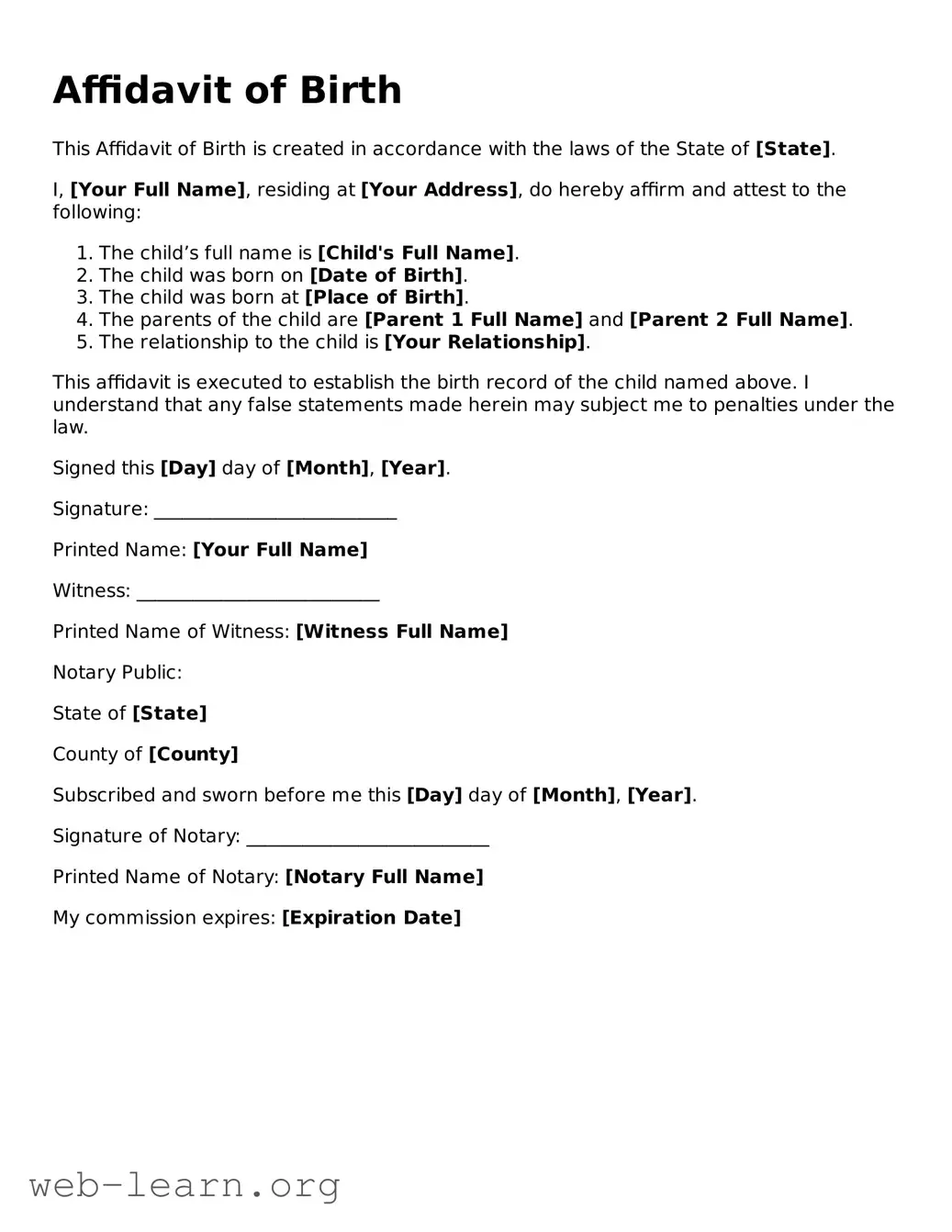Affidavit of Birth
This Affidavit of Birth is created in accordance with the laws of the State of [State].
I, [Your Full Name], residing at [Your Address], do hereby affirm and attest to the following:
- The child’s full name is [Child's Full Name].
- The child was born on [Date of Birth].
- The child was born at [Place of Birth].
- The parents of the child are [Parent 1 Full Name] and [Parent 2 Full Name].
- The relationship to the child is [Your Relationship].
This affidavit is executed to establish the birth record of the child named above. I understand that any false statements made herein may subject me to penalties under the law.
Signed this [Day] day of [Month], [Year].
Signature: __________________________
Printed Name: [Your Full Name]
Witness: __________________________
Printed Name of Witness: [Witness Full Name]
Notary Public:
State of [State]
County of [County]
Subscribed and sworn before me this [Day] day of [Month], [Year].
Signature of Notary: __________________________
Printed Name of Notary: [Notary Full Name]
My commission expires: [Expiration Date]
